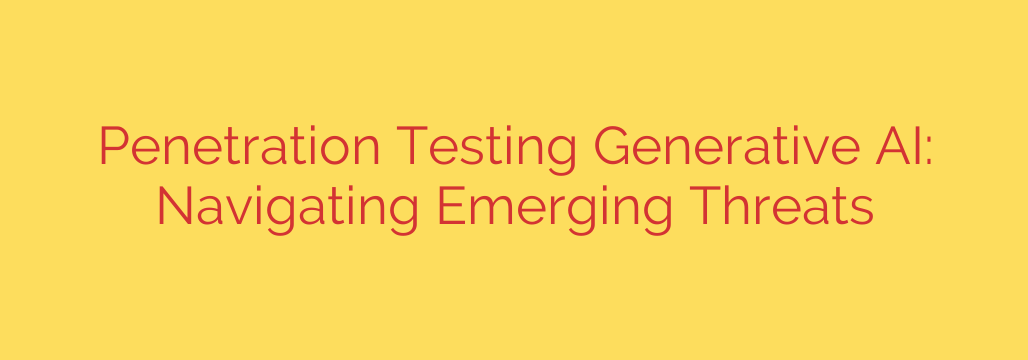
The rapid advancement of generative AI is fundamentally reshaping the cybersecurity landscape. This powerful technology introduces a new wave of sophisticated threats that security professionals must urgently address. As AI systems become more integrated into applications and workflows, they simultaneously expand the attack surface and equip attackers with unprecedented capabilities.
One major impact is on penetration testing. Traditional methodologies are increasingly challenged by AI-powered attacks that can be highly targeted, adaptable, and difficult to detect. Generative AI can be used to craft incredibly convincing phishing content, automate the identification of vulnerabilities, and even generate malicious code variants, accelerating the pace and sophistication of exploitation attempts.
Furthermore, the AI systems themselves introduce novel vulnerabilities. Issues like prompt injection, data poisoning, model extraction, and privacy risks within training data represent entirely new attack vectors that require specialized testing techniques. Penetration testing must evolve to include assessments of AI model security, data pipeline integrity, and the unique risks associated with AI application deployment.
Navigating these emerging threats demands a proactive approach. Cybersecurity teams need to understand how attackers can leverage generative AI and adapt their defenses accordingly. This includes developing new skills for testing AI systems, leveraging AI-powered tools for defensive purposes where appropriate, and continuously updating security strategies to keep pace with technological advancements. Effective penetration testing in this new era is crucial for identifying weaknesses before they can be exploited, ensuring robust security postures against an increasingly intelligent adversary. The focus must shift to continuous learning and adaptation to build resilience in the face of AI-driven risk.
Source: https://collabnix.com/penetration-testing-for-generative-ai-addressing-emerging-threats/








